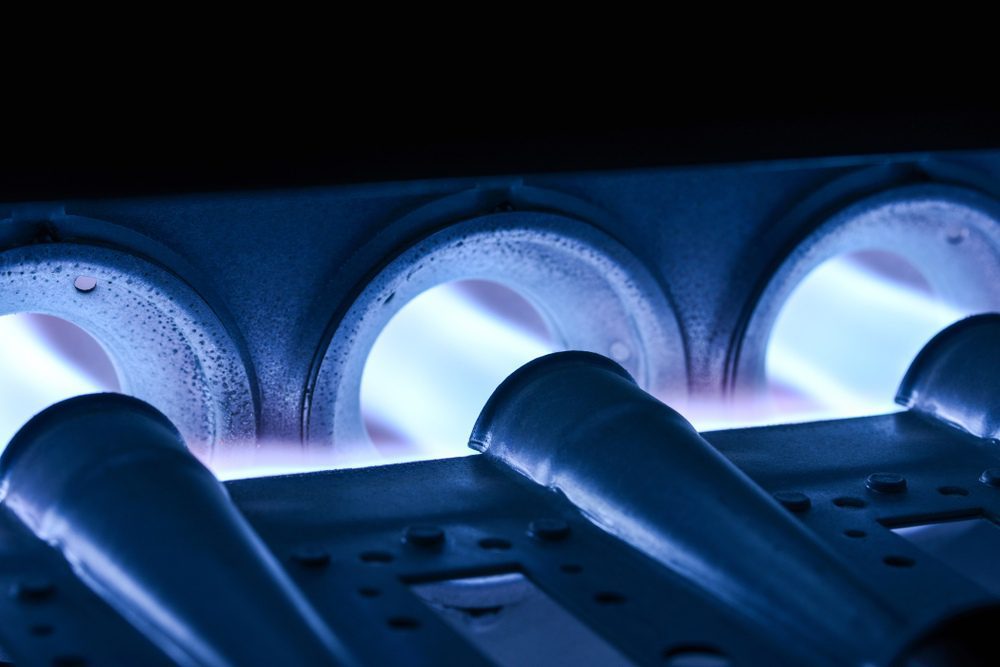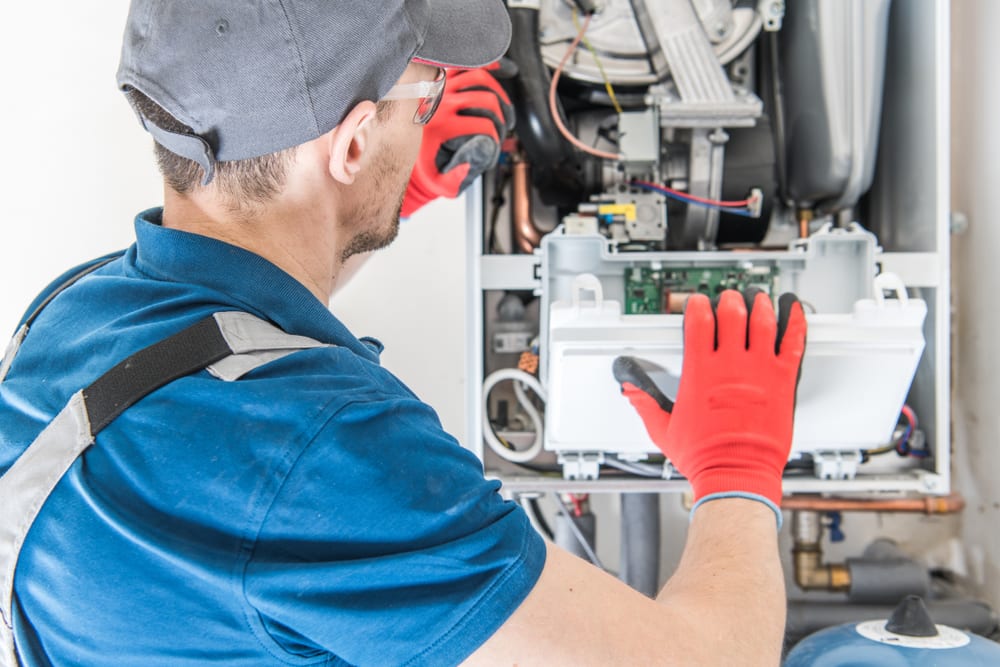
What is a Gas Burner?
As the name suggests, a furnace burner is a mechanism within your furnace that produces heat. Combining air and fuel before combustion, the generated warmth is dispersed throughout the ventilation system to heat your living or workspace. The size of your furnace determines if it has a singular or dual burner. All heating units—propane, gas, and oil—contain furnace burners. Some furnaces also have a pre-mixer, which is responsible for combining fuel and air before it’s heated to produce more efficient furnaces.
Table of Contents
How Does a Furnace Burner Operate?
To help you get an in-depth understanding of a furnace burner, let’s break the air-warming process into six steps:
Step One: When a room’s air temperature is below a thermostat’s set temperature, the heating cycle begins.
Step Two: As the fuel valve opens and releases fuel for the furnace burner, the air intake system gathers fresh air from outside. The incoming air and fuel combine.
Step Three: The pilot light ignites, warming the fuel-air combination.
Step Four: Warm air is blown over the heat exchanger and is moved through your home’s HVAC ductwork.
Step Five: Hot air is then distributed through the ventilation system by a blower fan.
Types of Furnace Burners
The majority of furnace burners in residential heating systems are one of the following:
Conversion Burner: Use when heating systems need to transform fuel before burning.
Inshot Burner: Component of high-efficiency furnaces. Requires a blower to intake air into the furnace burner and through the ignition chamber and heat exchanger.
Upshot Burner: Popular component for natural draft furnaces. Commonly found in older furnaces.
4 Types Of Furnace Burner Issues
Most of us don’t know how essential a furnace burner is until it starts to malfunction. A fully functional burner will efficiently generate heat while preventing your exposure to carbon monoxide. If your furnace burner is faulty, contact a certified HVAC technician for professional advice. Listed below are the most common issues of a furnace burner:
Cracks
An aging burner may crack as a result of constant expansion (heating) and contraction (cooling). This normal wear is resolved with the replacement of your furnace burner.
Rust & Deterioration
If it’s been several years since you hired a professional to perform furnace maintenance, you may have a rusty burner. Rust, which is caused by residual moisture and lack of air circulation, can impact the function and efficiency of your furnace burners. Deteriorating parts will need immediate replacement.
Blockages
Without regular maintenance, your furnace’s filter will collect debris, prevent adequate airflow, and create noise. It may even prevent the pilot flame from igniting. If you’re not sure how to clean a gas furnace burner, contact a technician for maintenance.
Tips & Insights: Why Is My Heat Pump Not Cooling the Home?
Insufficient Heat
If your furnace is producing insufficient amounts of heat, your burners may be the culprit. To be sure, the best thing you can do is call a qualified HVAC professional.
6 Steps a Licensed Technician Follows To Clean Gas Furnace Burners
If you’re not sure how to clean your gas furnace check out this six-step guide below. You’ll be a pro in no time.
1.) Deactivate the Furnace
Avert accidents by first shutting off the power to your furnace. This can be done in one of two ways: from the breaker or from your furnace’s power switch.
2.) Disassemble the Doors on the Furnace
The next step you will need to follow when you are cleaning your gas furnace burners includes removing the access panels. Depending on the make and model of your furnace, the doors will be spring-loaded or have knobs or screws.

3.) Locate the Gas Burners
Your burners may be located in a metal box or held in place with screws. Take a picture of how it looks before disassembling.
4.) Access Burner/Open Burner Box
Use a screwdriver or drill to remove the screws stabilizing your burner.
If you have a burner box, you may need to remove other components before you’re able to access the burner directly.
5.) Remove the Gas Burners From the Furnace
To ensure the furnace burners in your system are clean, you will need to remove the burners to examine them for dirt and debris. Next, set the burners on top of plastic or old newspapers to contain debris when cleaning.
6.) Sanitize the Gas Burners
The next step of cleaning the gas furnace burners will consist of utilizing a brass brush to scrub the wings, length, and face of each burner. Don’t be alarmed if there’s excessive gunk.
When your burners are nice and clean use compressed air to eliminate lingering debris, then reassemble using the photograph you took as a guide.

Furnace Repair & Installation Services
Don’t compromise your comfort. If you’re not sure how to clean furnaces or gas burners, call our team to receive assistance. We will help you keep your residential property warm all winter long with dependable furnace repair and furnace installation services. In addition, our team of certified technicians provides other types of innovative HVAC repair solutions such as air conditioning repair, heat pump installation, whole home dehumidifier replacement, and air conditioning installation. We service properties in and surrounding Neptune Beach, St. Johns, Jacksonville, Fleming Island, and St. Augustine. Whether gas or electric, our team of certified HVAC contractors are prepared to restore warmth to your living space. Contact our trusted technicians by phone at (904) 217-5694 or book a furnace repair appointment online.
Tips & Insights: Why Does My Sump Pump Keep Running?


